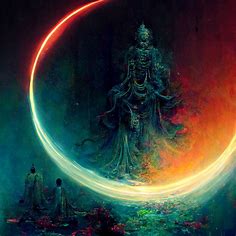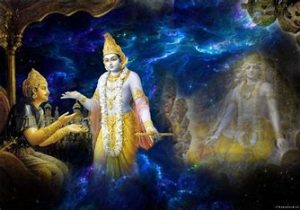As part of my own journey of exploring and remembering in this next series of blogs I will be focusing on Vedic concepts by which we can access to the essence of the Vedantic tradition and their wisdom.
This particular blog will be focusing on the concept of Atman and Prakriti:

In Vedanta Advaita, the concepts of Atman and Purusha are often referred to as intertwining and, at times, as the same concept. However, there are some differences in the definitions of the two concepts. Purusha is defined as pure consciousness, indicated as universal consciousness, while Atman is the higher self within us, the individual experience of that consciousness.
The word Atma is derived from the Sanskrit root ata which means Satatya Gamane or ‘that which is in constant motion’. Atman is always in movement from one body to another because of the cycle of births and deaths.
Purusha is the embodied Brahman (the essence of creation/ which will be explored in the next blog), the cosmic being or universal spirit. Atma, Jiva, Jivatma are reflections of this same Brahman, referring to the individual soul or self. And this reflection is often referred to as purusha as well.
Purusha is the faculty of consciousness in existence, contrasted by prakriti which is the material world. Atma is the faculty of consciousness in the individual. Jivatma is the individual soul.
Sri Swami Dayananda Saraswati, in his book, Tattvabodhah, define Atman as:
The one who is distinct from the gross, subtle and causal bodies, who is beyond the five levels of experience, being the witness of the three states (of experience), that which remains in the form of existence, consciousness and fullness, he (is) the self, atman.
 In chapter 13 of the Bhagavad-Gita, Arjuna asked Krishna about the prakriti (nature) and Purusha (as the enjoyer). In the text 23 Krishna relates to Purusha as:
In chapter 13 of the Bhagavad-Gita, Arjuna asked Krishna about the prakriti (nature) and Purusha (as the enjoyer). In the text 23 Krishna relates to Purusha as:
Upadrastanumanta ca bharta bhokta mahesvarah
Paramatmeti capy ukto dehe’smin purushah parah
Yet in the body there is another, a transcendental enjoyer who is the Lord, the supreme proprietor, who exists as the overseer and permitter, and who is known as the super soul.
In this way Krishna makes a clear difference between the observer and the transcendental cause of the observations as the Atman/ Prakriti and Brahman/ Purusha.
I hope the reader can appreciate my humble effort to simplify and make this concepts more accessible to all, making clear that I do not hold any authority or claim any deeper wisdom of the Vedanta other that the my own experience and exploration over the years.
Hari om Tat Sat